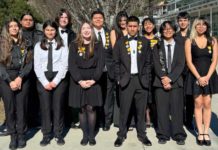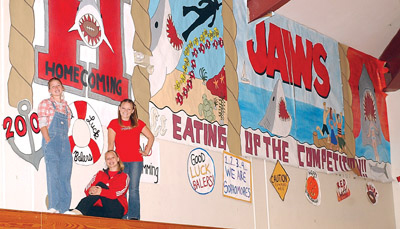
When Alicia Flores heard about the new No Child Left Behind
requirements for instructional aides, she was very scared.
”
In the beginning, there was no mention of a test. I’ve been out
of school for over 30 years,
”
Flores said.
”
I decided I would work up until the deadline. I didn’t want to
go back to school.
”
Flores has been an instructional aide for 17 years. By 2006, she
has to be a credentialed
”
paraprofessional,
”
the term the federal government uses for instructional
aides.
When Alicia Flores heard about the new No Child Left Behind requirements for instructional aides, she was very scared.
“In the beginning, there was no mention of a test. I’ve been out of school for over 30 years,” Flores said. “I decided I would work up until the deadline. I didn’t want to go back to school.”
Flores has been an instructional aide for 17 years. By 2006, she has to be a credentialed “paraprofessional,” the term the federal government uses for instructional aides.
Any paraprofessional must have a high school diploma or its equivalent and meet one of the following: have an A.A. degree or higher, complete at least 48 college units, or pass an assessment developed by their school district.
By definition, a paraprofessional is a “trained worker who is not a member of a given profession but assists a professional.”
At first, “paras” did not have the option to take a test, scaring Flores and others. But even with the test, paras still remain stressed about their futures.
“From the very beginning, we knew that if we didn’t pass the test, we were out,” Flores said.
Flores and Andrea Rodriguez are paraprofessionals at R.O. Hardin School. They were the first to take the Hollister School District’s assessment. Both passed with scores in the 90s.
“We just wanted to get it over with,” Rodriguez said.
The test consisted of 70 multiple-choice questions. Most had two answers that were correct, but directions asked for the best answer. Questions ranged from math and reading to discipline, Flores and Rodriguez said.
Paraprofessionals “should be able to demonstrate knowledge of and the ability to assist in instructing in the areas of reading, writing and math, or in ‘school readiness,'” according to the state Department of Education’s Web site.
Rodriguez isn’t sure a test can prepare people for working in the classroom – it’s more about on-the-job experience, she said.
“You have to be prepared to answer (the students’) questions,” she said. “You have to learn things as you go along – things change so often.”
Despite the feelings of unease, both said they feel the district is doing all it can to help all paras pass the test.
The HSD employs about 40 paras. Five need to work or take the test to meet the paraprofessional standards, according to Bill Jordan, director of human resources. Of a sample group of 10 that took the assessment in November, nine passed.
“We’re basically going to test everyone (to be safe),” Jordan said. “We hope that the success of the first group will get out and alleviate some of the fears.”
For people who do not pass the test, the HSD will offer tutoring, in person and online, to make sure everyone passes by 2006, Jordan said.
Paraprofessionals serve in one of several areas: providing one-on-one tutoring; assisting with classroom management; conducting parental involvement activities; acting as a translator; and providing instructional support services under the direct supervision of a teacher.
The San Benito High School District utilizes 23 paras, mostly in special education classes. Ten do not meet the new requirements, said Evelyn Muro, director of human resources.
“We’re encouraging them to go back and get their A.A. degree – it’s an additional component that is to their advantage,” Muro said. “With the degree, they’re higher on the salary schedule (thus, get paid more). A lot of them are very close (to getting the degree).”
There are 22 paras working in the Aromas-San Juan Unified School District. Two meet the qualifications. The district and teachers union is working toward establishing an assessment. Both sides agree there needs to be some form of classroom observation, Superintendent Jackie Munoz said.
“(The test) has to show the person can teach,” she said. “You can’t get that in a written test.”








